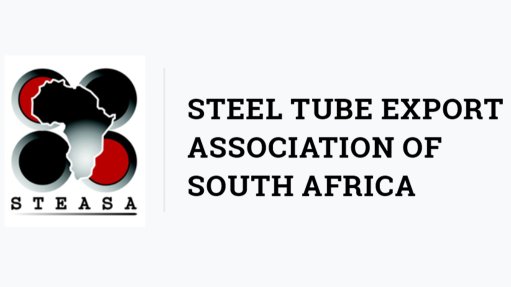Distance, what distance? Microgrids meet remote operations’ energy requirements
This article has been supplied.
By Nishandra Baijnath, Systems Architect, Power Systems, Anglophone Africa at Schneider Electric
As the world’s second largest continent, the vast expanse Africa lends itself to remote operations, often hundreds of kilometres away from civilisation and the hub of infrastructure and supply such as energy.
Industries like mining, minerals and metals often must contend with considerable energy loss or high transportation costs of diesel (for self-generation) due to these vast distances. The reality is electricity which travels far, encounter conductor resistance which in turn leads to transmission inefficiency.
Furthermore, distance also negatively impacts grid stability as power systems require balanced supply and demand to ensure reliable operations. Transmission infrastructure maintenance, repair and new installations can also be prohibitively expensive when the nearest town is hundreds of kilometres away. This effectively adds to the cost of electricity for the customer.
The good news is advancements in off-grid electrification have opened new possibilities for remote industries. Technologies such as microgrids, which mostly comprise renewable energy such as solar and wind, not only mitigate energy loss but also contribute to the reduction of greenhouse gas (GHG) emissions which contribute to organisations’ net zero goals.
Importantly, remote microgrids can also give back to communities; typically, there are small settlements or towns close to mines and other remote operations which in turn create an economic ecosystem of sorts.
By utilising microgrids, remote communication can meet their own energy needs, benefiting from stable supply particularly when the closest maintenance crews are kilometres away. Furthermore, microgrids can work together to create a mini-grid and give surplus energy back to the grid,
The benefits of microgrids in remote areas also go beyond its ability to harness and manage renewable energy, offering:
- Higher resilience – Microgrids can generate and store electrical energy independently from any main power grid supply, thereby offering a more resilient approach to maintaining power stability. By having the option of either acting in coordination with the existing grid or as an independent island, the steady, predictable supply of energy greatly minimises operations downtime related to power interruptions.
- Support for migration from fuel furnaces to electric furnaces – in the glass and steel industries, a sustainability trend towards the electrification of furnaces is helping to reduce costs and to lower global carbon emissions.
- Innovations such as Electric Arc Furnaces (EAF) and Direct Reduction Iron (DRI) are helping to eliminate the use of high emissions fuel furnaces. Microgrids play an important role in supporting these new processes as alternative and additional sources of renewable energy.
- Easier management – Schneider Electric’s EcoStruxure Microgrid Operation (EMO) is an on-premises power management solution that ensures stability and reliability of energy supply in all grid conditions.
It is coupled cloud-based energy management solutions such as Schneider Electric’s EcoStruxure Microgrid Advisor (EMA), which provides a web based Human Machine Interface (HMI) for site managers to process the various demand/response requests and optimise output decisions based on energy tariff rates and weather forecast predictions, whilst factoring in user consumption constraints. Essentially this allows for making the correct decision at the right time for forecasting and optimisation on when to consume, produce, store, or sell energy.
- ROI – lower renewable power generation prices make microgrids increasingly cost-effective to operate. Prices are also declining for electric energy storage, allowing for more effective self-consumption of renewable energy sources.
Microgrids offer a truly viable option to remote areas, overcoming a myriad of challenges associated with traditional grid operations to ensure a stable and reliable energy supply whilst also establishing greener, sustainable operations.
Article Enquiry
Email Article
Save Article
Feedback
To advertise email advertising@creamermedia.co.za or click here
Press Office
Announcements
What's On
Subscribe to improve your user experience...
Option 1 (equivalent of R125 a month):
Receive a weekly copy of Creamer Media's Engineering News & Mining Weekly magazine
(print copy for those in South Africa and e-magazine for those outside of South Africa)
Receive daily email newsletters
Access to full search results
Access archive of magazine back copies
Access to Projects in Progress
Access to ONE Research Report of your choice in PDF format
Option 2 (equivalent of R375 a month):
All benefits from Option 1
PLUS
Access to Creamer Media's Research Channel Africa for ALL Research Reports, in PDF format, on various industrial and mining sectors
including Electricity; Water; Energy Transition; Hydrogen; Roads, Rail and Ports; Coal; Gold; Platinum; Battery Metals; etc.
Already a subscriber?
Forgotten your password?
Receive weekly copy of Creamer Media's Engineering News & Mining Weekly magazine (print copy for those in South Africa and e-magazine for those outside of South Africa)
➕
Recieve daily email newsletters
➕
Access to full search results
➕
Access archive of magazine back copies
➕
Access to Projects in Progress
➕
Access to ONE Research Report of your choice in PDF format
RESEARCH CHANNEL AFRICA
R4500 (equivalent of R375 a month)
SUBSCRIBEAll benefits from Option 1
➕
Access to Creamer Media's Research Channel Africa for ALL Research Reports on various industrial and mining sectors, in PDF format, including on:
Electricity
➕
Water
➕
Energy Transition
➕
Hydrogen
➕
Roads, Rail and Ports
➕
Coal
➕
Gold
➕
Platinum
➕
Battery Metals
➕
etc.
Receive all benefits from Option 1 or Option 2 delivered to numerous people at your company
➕
Multiple User names and Passwords for simultaneous log-ins
➕
Intranet integration access to all in your organisation



















